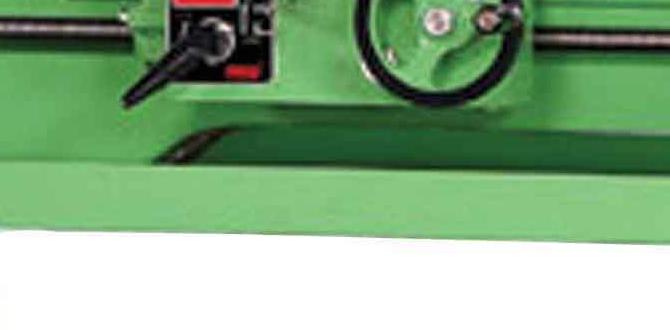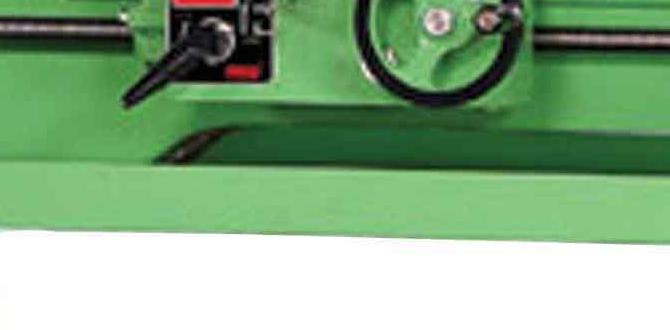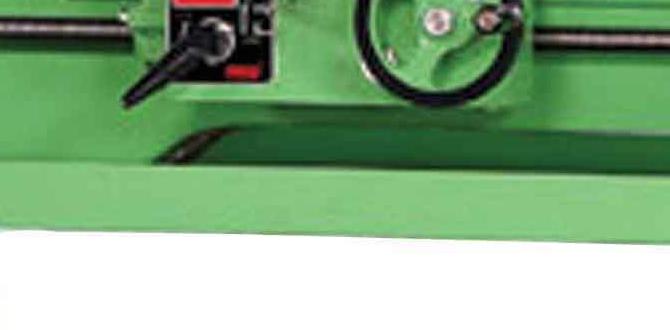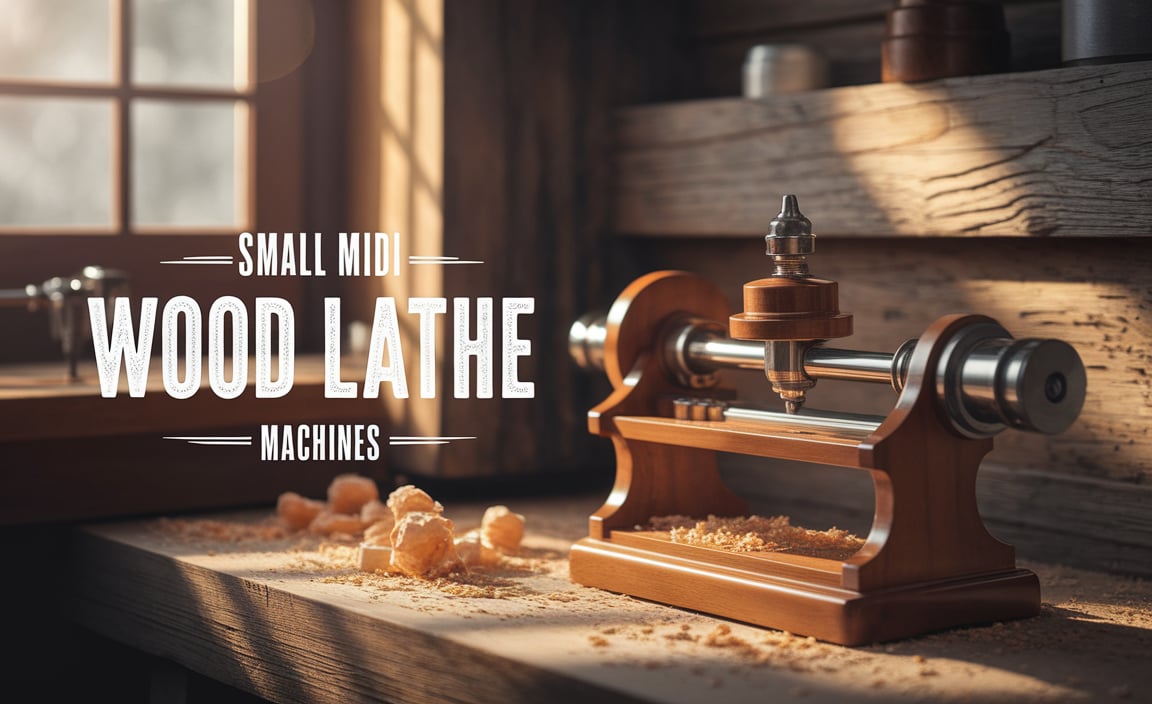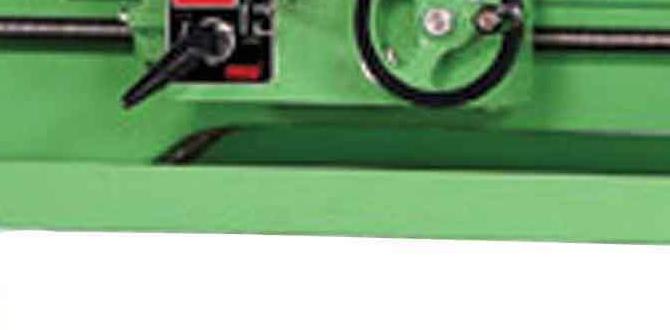Ball nose vs. corner radius: This guide clarifies the key differences between ball nose and corner radius end mills, helping you choose the right tool for smoother finishes and precise cuts in materials like stainless steel.
Ever stare at a toolbox, tools in hand, and wonder which cutter is best for that tricky curve or sharp corner? You’re not alone! For anyone diving into metal or woodworking, understanding your end mills is a huge step. Ball nose and corner radius end mills sound similar, and they do similar jobs, but they have unique strengths. Getting this choice right can be the difference between a frustrating job and a beautiful finish. Let’s clear up the confusion and get you creating with confidence!
Ball Nose vs. Corner Radius End Mills: Your Essential Guide
When you’re machining parts, especially those with complex shapes or smooth transitions, the type of end mill you use is critical. Two common types you’ll encounter are ball nose and corner radius end mills. While both can create curved surfaces, they do so in slightly different ways and excel in different applications. Understanding their distinct characteristics will help you achieve better results, improve your efficiency, and prevent potential errors.
What is a Ball Nose End Mill?
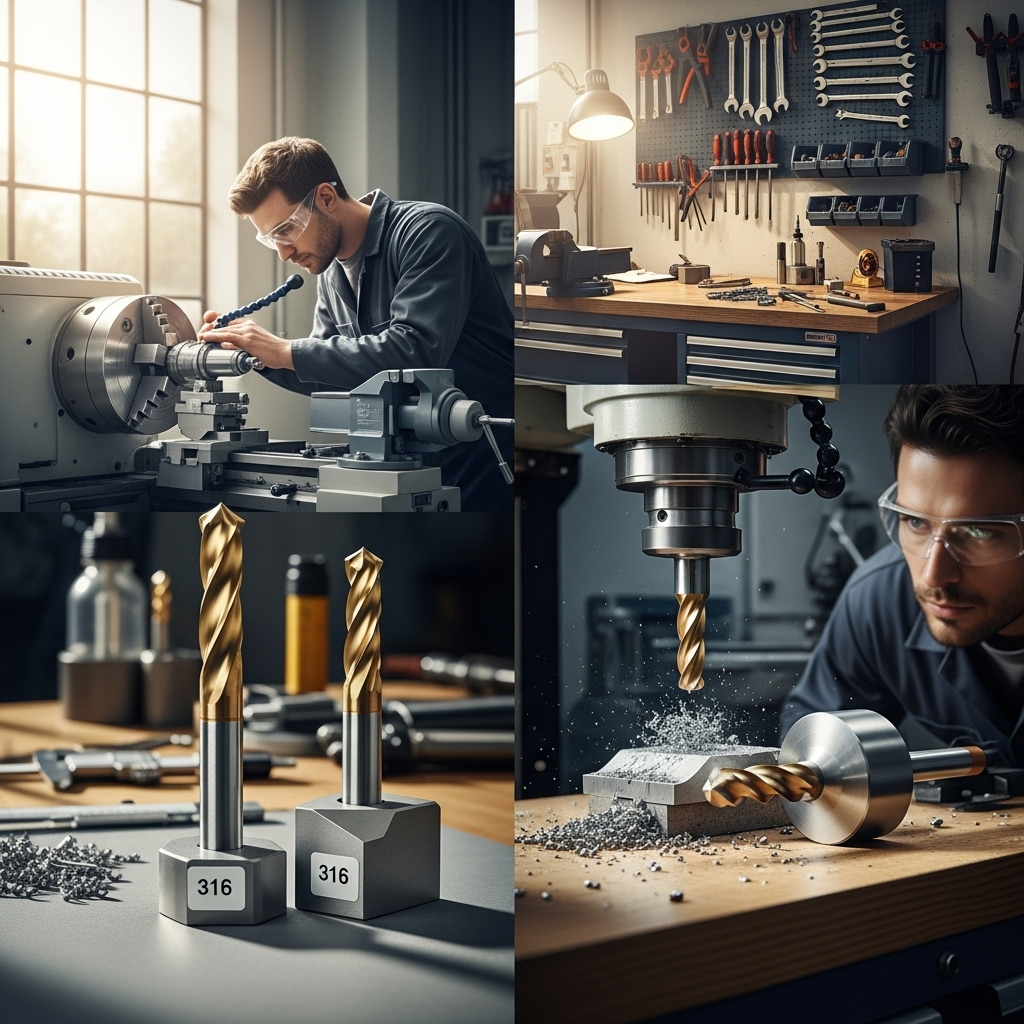
A ball nose end mill, also known as a bull end mill, features a cutting head that is a perfect half-sphere. The cutting edges extend all the way to the center of the tip. This design makes it ideal for creating rounded internal corners, 3D contours, and complex sculpted surfaces. Because the tip is essentially a half-sphere, it can plunge cut straight down into material without needing to engage the side walls, making it versatile for carving and intricate detailing.
Key Characteristics of Ball Nose End Mills:
- Full Radius Tip: The tip is a perfect hemisphere.
- Versatile Cutting: Can cut on the tip and the sides.
- 3D Machining: Excellent for complex sculpting and freeform surfaces.
- Rounded Features: Creates smooth, continuous curves.
- Plunge Cutting: Can be used for drilling or pocketing operations.
When to Use a Ball Nose End Mill:
- Machining concave surfaces.
- Creating smooth, flowing contours in 3D models.
- Carving intricate details or decorative elements.
- Finishing operations where a smooth, radiused edge is desired.
- When you need to create fillets (internal rounded corners).
What is a Corner Radius End Mill?
A corner radius end mill, often called a bull end mill or a radiused end mill, is similar to a standard end mill but with a rounded edge at the corners where the flutes meet the cutting face. This radius can vary from very small to quite significant. The primary purpose of this radius is to strengthen the cutting edge, making it more robust and less prone to chipping, especially when machining hardened materials or taking heavier cuts. It’s designed to create features with consistently radiused outside corners or to achieve a specific fillet size when milling internal corners.
Key Characteristics of Corner Radius End Mills:
- Rounded Corners: The cutting edges at the tip corners are rounded.
- Stronger Edge: The radius provides more support, reducing chipping.
- Specific Radii: Available in various standard radius sizes (e.g., 0.031″, 0.062″, 0.125″).
- Improved Tool Life: Less prone to breakage, especially in tougher materials.
- Consistent Radii: Designed to produce predictable rounded external corners or internal fillets.
When to Use a Corner Radius End Mill:
- Machining parts that require a specific external corner radius.
- When the corners of a pocket or slot need to be rounded to a specific dimension.
- Machining harder materials where edge strength is crucial.
- When a stronger cutting edge is needed to prevent chipping.
- For general milling operations where a small radius is beneficial for strength and finish.
Ball Nose vs. Corner Radius: The Key Differences Explained

The fundamental difference lies in the shape of their cutting tips and how that shape is utilized. A ball nose end mill has a fully spherical tip, allowing it to create any radius from zero up to the tool’s diameter, and can machine in multiple directions with its tip. A corner radius end mill has a standard flat or slightly dished tip with rounded corners, specifically designed for machining features that require a defined radius on the outside or inside of a part, while offering more edge strength.
Comparing Their Capabilities:
| Feature | Ball Nose End Mill | Corner Radius End Mill |
|---|---|---|
| Tip Shape | Full hemisphere (ball shape) | Flat or slightly dished tip with rounded corners |
| Primary Use | 3D contouring, sculpting, internal fillets, rounded features | Creating specific external corner radii, stronger edge for harder materials, general milling with improved edge strength |
| Radius Control | Can create any radius up to its diameter, versatile for complex curves | Designed for specific, fixed radii on corners |
| Edge Strength | Tip center can be weaker if cutting straight down at high loads | Rounded corners provide increased edge support and strength |
| Machining Styles | Excellent for 3D surfacing, plunge cutting, carving | Primarily for 2D profiling, pocketing, and creating defined corner radiuses |
| Material Application | All materials, particularly effective for complex organic shapes | Excellent for tougher materials, hardened steels, and where edge integrity is paramount |
Ball Nose vs. Corner Radius End Mill for Stainless Steel 316
Stainless steel 316 is a popular, versatile stainless steel alloy known for its excellent corrosion resistance, especially in chloride-containing environments. However, it can be challenging to machine due to its toughness and tendency to work-harden. Choosing the right end mill is critical for achieving good surface finishes and extending tool life.
Ball Nose End Mills for Stainless Steel 316:
Ball nose end mills are often favored for achieving smooth, flowing surfaces on stainless steel 316. Their ability to create gradual transitions without sharp corners helps in reducing stress concentrations in the workpiece, which can be beneficial for parts subjected to dynamic loads. When machining 3D contours or complex shapes, a ball nose end mill can provide a consistent surface finish. For finishing passes, a smaller step-over with a ball nose end mill is ideal for a mirror-like finish. However, it’s important to note that cutting directly on the very tip of a ball nose end mill at high feed rates can lead to rapid wear or chipping, particularly in a tough material like 316 stainless. Care must be taken with cutting parameters.
Corner Radius End Mills for Stainless Steel 316:
Corner radius end mills offer a significant advantage when machining stainless steel 316 due to their enhanced edge strength. The rounded corners are more robust than a square corner, making them less susceptible to chipping and premature failure when encountering the material’s hardness. If your part design requires specific internal fillets or external radii, a corner radius end mill is the dedicated tool for the job. They are excellent for pocketing and profile milling operations where consistent radiused corners are needed. Using an appropriate radius that matches the design requirement will ensure proper material removal and minimize stress on the cutting edge.
Considerations for Stainless Steel 316:
- Work Hardening: Both tool types should be used with appropriate speeds and feeds to avoid excessive work hardening, which increases cutting forces and tool wear. Researching optimal machining parameters for 316 stainless from reputable sources like Sandvik Coromant’s material guides is highly recommended.
- Coolant: Adequate coolant or lubrication is essential when machining stainless steel 316 to dissipate heat and improve chip evacuation.
- Tool Geometry: Look for end mills with fewer flutes (e.g., 2 or 3 flutes) for stainless steel, as this provides more chip room and reduces the risk of recutting chips.
- Coatings: Specialized coatings, such as TiAlN (Titanium Aluminum Nitride), can significantly improve performance and tool life when machining difficult materials like stainless steel.
Choosing the Right End Mill: A Practical Approach
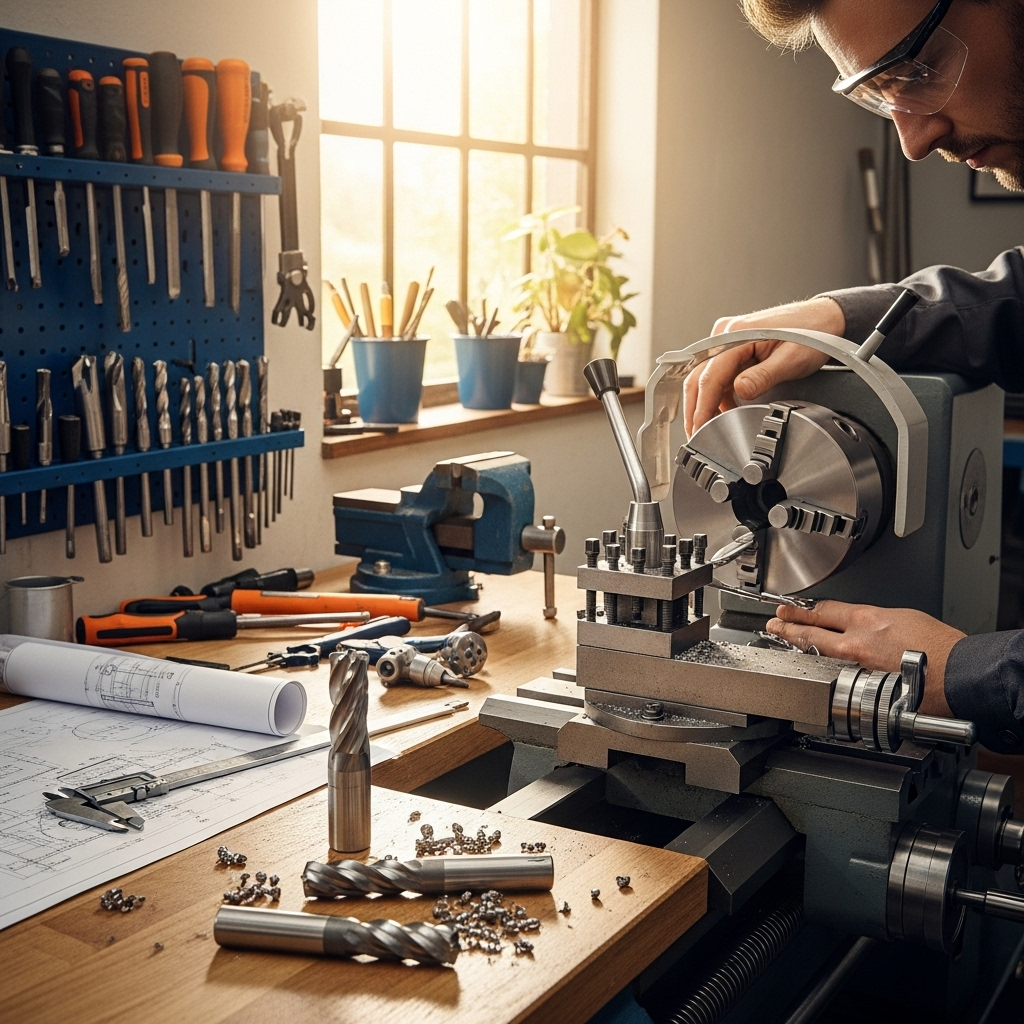
The choice between a ball nose and a corner radius end mill often comes down to the specific geometry you need to create and the material you are working with. Think about the desired outcome for your part.
Evaluating Your Project Needs:
- What shape are you trying to achieve?
- If you need a perfectly rounded tip or a complex, sculpted surface with smooth transitions, a ball nose end mill is likely your best bet.
- If you need a specific, consistent radius on the outside of a feature or an internal corner fillet to a precise specification, a corner radius end mill is usually the answer.
- What is the material?
- For softer materials or less demanding cuts, either can work.
- For harder materials like stainless steel, or when taking aggressive cuts, the added edge strength of a corner radius end mill is highly beneficial.
- What kind of finish do you need?
- Ball nose end mills are excellent for achieving very smooth, draft-free surfaces in 3D machining.
- Corner radius end mills provide a clean, consistent radius which can also lead to a good finish if parameters are set correctly.
- Consider the cutting forces.
- When plunging with a ball nose, the load is concentrated on the tip. For deep plunges, consider a specialized plunge end mill or ensure your speeds/feeds are conservative.
- Corner radius end mills generally distribute the cutting forces more favorably across the rounded edge, making them more robust.
Machining Techniques and Best Practices
Regardless of which end mill you choose, employing good machining practices will ensure success and safety.
General Tips for Using End Mills:
- Secure Workpiece: Always ensure your workpiece is securely fixtured. A loose part is a major safety hazard and will ruin your work.
- Correct Speeds and Feeds: Incorrect speeds and feeds are a primary cause of tool breakage and poor finishes. Consult manufacturer guidelines or machining calculators. For beginners, starting conservatively is always wise.
- Chip Evacuation: Ensure you have adequate chip clearance and that chips are being cleared from the cutting zone. For deep pockets or slots, peck drilling (plunge, retract, repeat) can help clear chips.
- Coolant/Lubrication: Especially with harder metals, using a suitable coolant or cutting fluid is crucial for cooling the tool and workpiece, and for lubricating the cut.
- Tool Holder: Use a quality tool holder, such as a collet chuck, for the best runout and holding power.
- Depth of Cut: Don’t try to remove too much material in a single pass. Multiple lighter passes are generally more efficient and easier on the tool and machine.
Specific Machining Steps (Example: Creating a Radiused Pocket)

Let’s imagine you need to mill a square pocket in a piece of aluminum, but you want it to have smoothly radiused internal corners. You could use a ball nose end mill to create the radius, or a slightly smaller corner radius end mill.
Method 1: Using a Ball Nose End Mill for Internal Radii
- Tool Selection: Choose a ball nose end mill with a diameter that matches or slightly exceeds the desired internal radius. For example, to create a 0.25″ radius in the corners, you might use a 0.50″ diameter ball nose end mill.
- Setup: Secure your aluminum workpiece in your milling machine. Install the ball nose end mill in a collet with minimal runout.
- Roughing the Pocket: Use a standard flat end mill to mill out the majority of the pocket material, leaving a small amount of stock within the corners where the radius will be.
- Finishing the Radii: Program or manually guide the ball nose end mill to sweep through the corners, removing the remaining material and creating the desired radius. This might involve a series of trochoidal cuts or a single pass tracing the corner.
Method 2: Using a Corner Radius End Mill for Internal Radii
- Tool Selection: Choose a flat end mill with a corner radius that matches your desired internal radius. For a 0.25″ internal radius, you would select an end mill with a 0.25″ corner radius.
- Setup: Secure your aluminum workpiece and install the corner radius end mill.
- Milling the Pocket: When milling the pocket, ensure the tool path is programmed such that the radiused corner of the end mill precisely forms the internal radius of the pocket. This often means the tool will not be able to remove material all the way to a sharp 90-degree inside corner; the radius of the tool dictates the radius of the pocket corner.
For this specific task, Method 2 is often more straightforward and efficient, as the tool is designed to create that exact radius. Method 1 is useful when you need to achieve a different radius than available with standard corner radius end mills, or when dealing with very complex 3D surface transitions using specialized CAM software.
Frequently Asked Questions (FAQ)
Q1: Can I use a ball nose end mill for general pocketing?
A: Yes, you can, especially for creating rounded internal corners or for 3D pocketing. However, for simple 2D pockets with square corners, a standard flat end mill is usually more efficient. If you are plunging, be mindful of the tool pressure on the very tip and consider using plunge-specific end mills or reducing feed rates.
Q2: What is the difference between an “end mill with a radius” and a “corner radius end mill”?
A: These terms are often used interchangeably. Both refer to an end mill where the cutting edges at the corners are not sharp but have a defined radius. This is primarily for edge strength and creating radiused features.
Q3: How do I know which radius size to choose for a corner radius end mill?
A: The radius should generally match the desired radius in your design. If you need a 1/8-inch fillet in a corner, you’d use an end mill with a 1/8-inch corner radius. It’s crucial to ensure this radius can clear the material in tight areas; sometimes a smaller radius is needed if a sharp internal corner is the alternative.
Q4: Will a ball nose end mill wear out faster than a corner radius end mill?
A: It depends heavily on the application. If used for aggressive profiling or plunging where the tip is heavily engaged, a ball nose can wear faster. However, for smooth 3D surfacing with light step-overs, it can offer excellent longevity. Corner radius end mills are generally more robust for edge-intensive operations due to their stronger cutting geometry.
Q5: Can I use a ball nose end mill to create sharp outside corners?
A: No, a ball nose end mill by its nature will always leave a rounded corner. If you need sharp outside corners, you’ll need a square (flat) end mill. However, some CAM software strategies can use a ball nose end mill to “finish” a surface, effectively blending it to a sharp corner, but the tool itself doesn’t create the sharpness.
Q6: Are there special considerations for machining plastics with these end mills?
A: Yes. Plastics can melt easily. For ball nose end mills in plastics, high speeds and moderate feeds with good chip evacuation are key. For corner radius end mills, their strength is less critical for plastics, but the radius helps prevent chipping. Always test parameters on scrap material. For certain intricate plastic parts, you might see specialized plastic-cutting end mills designed with fewer flutes and polished edges. For more on general machining principles, resources like the National Institute of Standards and Technology (NIST) offer insights into manufacturing processes.
Conclusion
Navigating the world of end mills can seem complex at first, but understanding the distinct roles of ball nose and corner radius cutters demystifies a significant part of it. Remember, the ball nose is your go-to for smooth, complex curves and 3D sculpting where continuous radii are desired. Its spherical tip allows for versatile cutting on contours and for creating internal fillets. On the other hand, the corner radius end mill excels when precise, consistent radii are needed for external or internal features, offering superior edge strength for tougher materials or more

